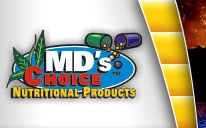Vitamins
![]()
| Niacin (Vitamin B3) |
Chemistry
Sources of niacin equivalents
Functions
Metabolism
Requirements
Deficiency
Toxicity
- Structure
- Coenzymes containing nicotinamide
- Oxidation and reduction of nicotinamide moiety
II. Sources of niacin equivalents
- NAD may be synthesized from Tryptophan in the liver
- 1g complete, high-quality protein contains 10 mg tryptophan
- 60 mg tryptophan generates 1 mg niacin equivalents
- Therefore, 6 g protein = 60 mg tryptophan = 1 mg niacin equivalents
- B. Dietary sources
- Milk (tryptophan)
- Fish, beef, chicken, turkey, port, other meats
- NAD and NADP undergo hydrolysis following slaughter so meats provide free nicotinamide
- C. Cereal grains, seeds, and legumes (except corn)
- Niacin in corn is bound and unavailable
- Nound niacin for be released by alkali
- American Indians soaked corn in lime or potash solutions in making hominy and before grinding meal
- Jowar, a millet used in India, is also pellagragenic
- Unlike corn, its nicotinic acid is free
- It has a good tryptophan content
- Like corn, it is relatively high in leucine
- Excess leucine inhibits a key enzyme (quinolinate phosphoribosyltransferase) in conversion of tryptophan to NAD
- Leucine also stimulates a key enzyme (picolinate carboxylase) in the degradation pathway of tryptophan
- Niacin in corn is bound and unavailable
- D. Tea and Coffee
- Trigonellin in raw-coffee is converted to nicotinic acid on roasting
- Absence of pellagra in Central and South American countries whose staple is corn is attributed to widespread consumption of coffee
- Approximately 200 enzymes, primarily dehydrogenases, require NAD and NADP
- Functions of NAD and NADP in the cells are quite different
- The major role of NADH is to transfer electrons from intermediated through the electron transport chain to produce ATP
- Oxidative reactions in which NAD is reduced to NADH. Examples are:
- Glycolysis - glucose is degraded into pyruvate
- Oxidative decarboxylation of pyruvate
- Oxidation of acetate via the tricarboxylic acid cycle
- B-Oxidation of fatty acids
- NAD is required for catabolism of vitamin B6 (pyridoxal) to its excretory product (pyridoxic acid)
- NAD has some nonredox functions
- NAD acts as a donor of ADP ribose for posttranslational modification of proteins. This suggests niacin is involved in growth and differentiation of cells
- Niacin along with chromium is thought to be a component of glucose tolerance factor (GTF)
- Functions of NADP
- Hexose monophosphate shunt which generates important intermediates not produced in other pathways (pentose phosphates, NADPH)
- Malate shuttle which transports acetyl CoA out of the mitochondria
- NADPH is used in a variety of reductive biosyntheses
- Fatty acid synthesis
- Cholesterol and steroid hormone synthesis
- Oxidation of glutamate
- Synthesis of deoxyribonucleotides
- Reduction of vitamin C
- Glutamine reductase (GSSG ® 2GSH) requires NADPH
- Conversion of folate to its active forms
- Absorption and Transport
- NAD and NADP are hydrolyzed in the intestinal tract to release nicotinamide
- Nicotinamide and nicotinic acid are absorbed primarily from the small intestine
- By a Na-dependent, saturable system at low concentrations
- By passive diffusion at high concentrations
- Nicotinic acid converted into nicotinamide in the mucosal cells
- First incorporated into NAD
- Then released through NAD hydrolysis
- Found in plasma primarily as nicotinamide
- Nicotinamide and nicotinic acid cross cell membranes by simple diffusion (kidney tubules and red blood cells require a Na-dependent carrier system)
- Nicotinamide is taken up by the tissues and incorporated into the coenzymes
- B. Excretion
- NAD and NADP can be degraded by glycohydrolase into nicotinamide and ADP-ribose
- Nicotinamide is methylated and oxidized into a variety of products excreted in urine
- Estimation of niacin requirements is complicated by tryptophan-derived NAD which is affected by a variety of influences
- Amount of tryptophan and niacin ingested
- Protein and energy intake
- Adequacy of riboflavin and vitamin B6
- Recommendations in humans are given in niacin equivalents (NE)
- Adult human.........9.2-13.3 NE
- Swine...................5-10 mg/lb feed
- Chicks..................12 mg/lb feed
- Dogs....................100-180 mg/lb BW/day
- Human – Pellagra
- Dermatitis of areas subject to mechanical urolutein, photosensitivity
- Dementia (May be due to elevated pyruvate)
- Irritability
- Headaches
- Sleeplessness
- Loss of memory
- Delirium
- Diarrhea, indigestion and anorexia
- Glossitis - scarlet red tongue
- Dog – Black tongue
- Inflammation of gums, redness of palate
- Beet red tongue with black necrotic areas
- Bloody diarrhea
- Chick
- Inflammation of mouth, esophagus and crop
- Poor feathering
- Normocytic anemia
- Pigs
- Diarrhea, vomiting
- Dermatitis
- Normocytic anemia
- Niacin is not stored and appears to be relatively nontoxic in large doses
- 3-6 g/day is sometimes used to lower serum cholesterol and low density lipoproteins but may have side effects
- Release of histamine resulting in uncomfortable flushing
- Possible liver damage
- Competition of niacin with uric acid thereby increasing serum urate
- Dermatologic problems, itching
- Elevated plasma glucose
![]()
Vitamins

For individual consultation or questions about our products, call
1-800-628-0997
Click Here for a Printable Version of This Page
